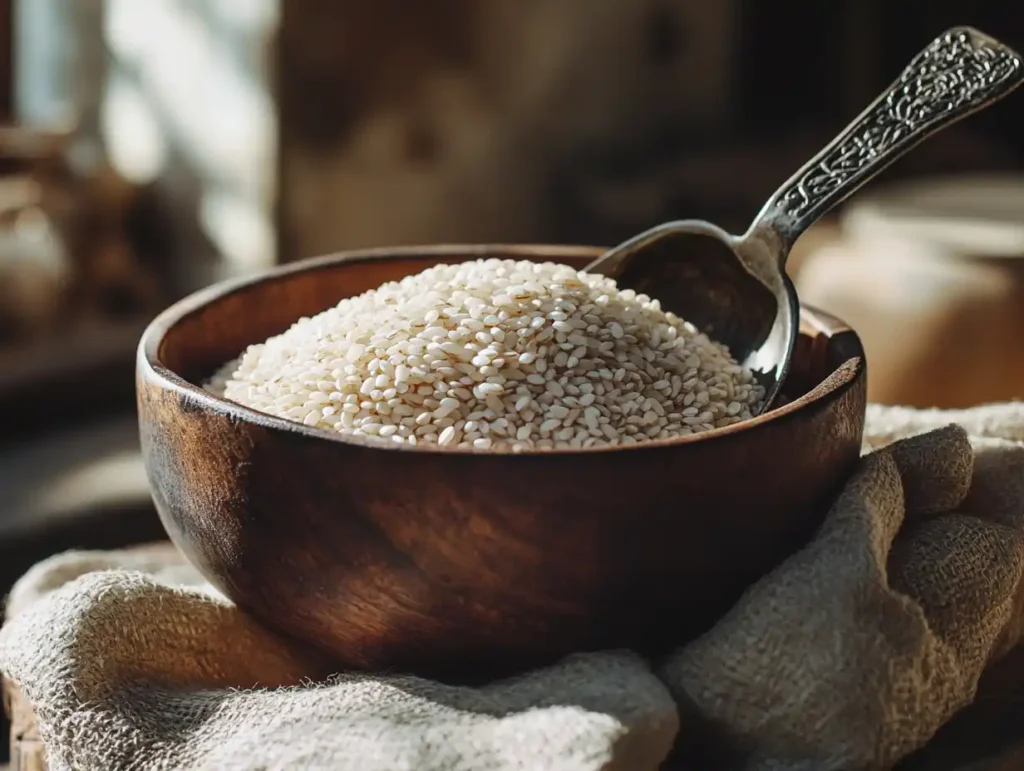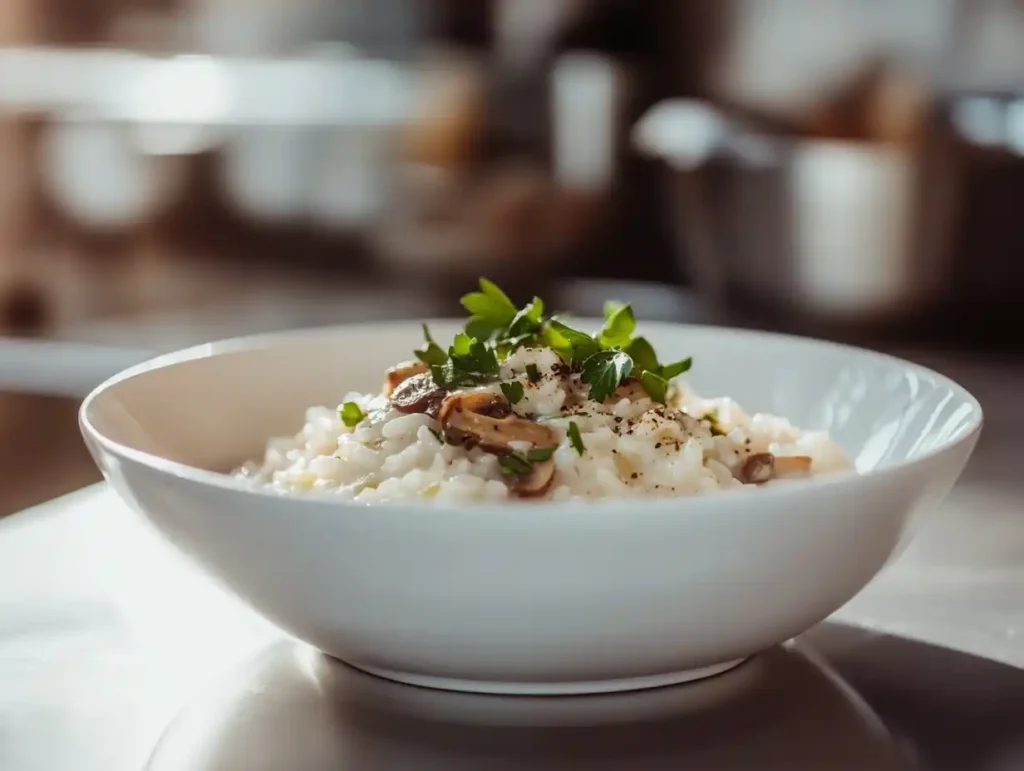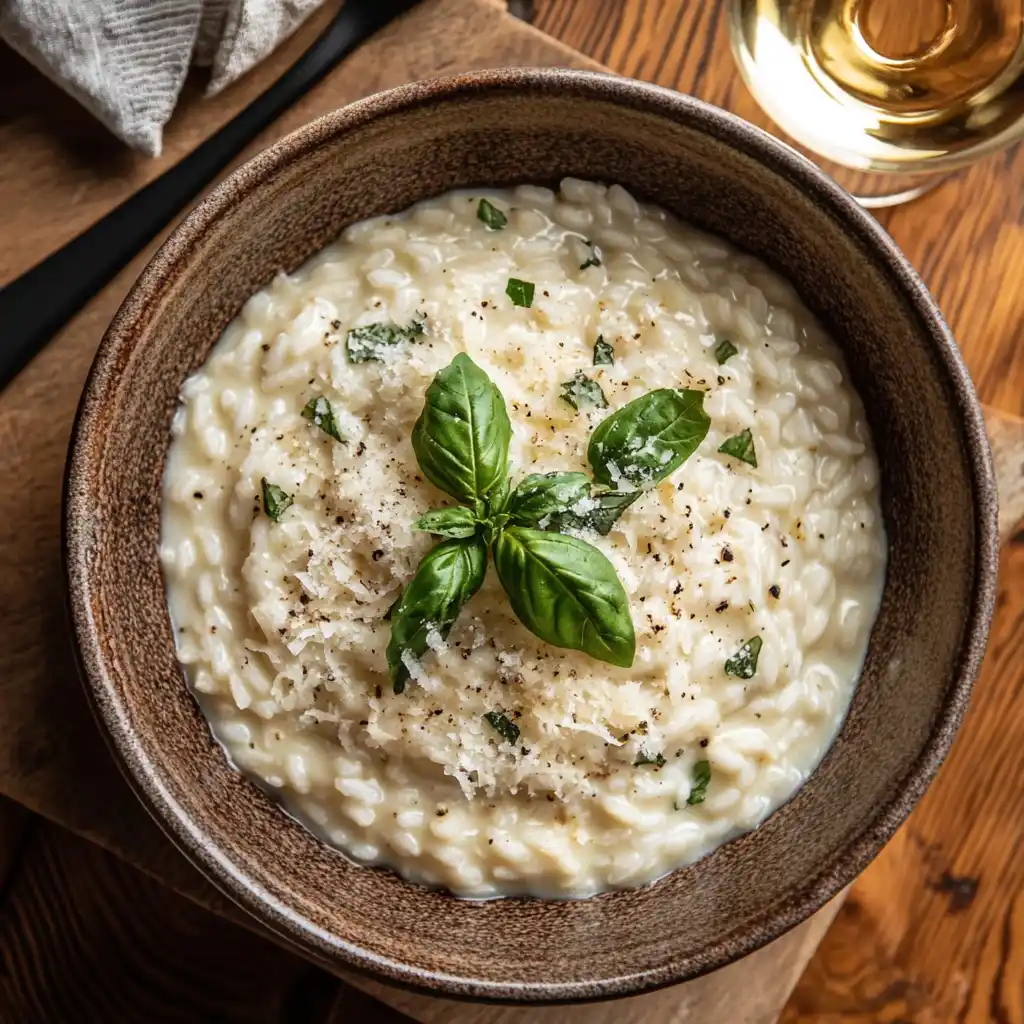Creamy, comforting, and utterly delicious, risotto is one of those iconic Italian dishes that leaves people asking, “Wait… is risotto rice or pasta?” The confusion is real, and totally fair. With its rich texture and the way it’s often served like a pasta dish, risotto can easily blur the lines between grain and noodle.
In this article, we’re diving headfirst into the world of risotto. We’ll unravel the myth vs. reality, break down ingredients (hint: it’s all about the Arborio rice), explore how risotto is cooked, and explain why it’s neither your typical rice dish nor pasta plate. Whether you’re a foodie, a home cook, or just curious, we’ve got you covered.
Let’s start by setting the stage: what is risotto, really?
Understanding the Basics: What is Risotto?
The Origins of Risotto: An Italian Legacy
Risotto hails from Northern Italy, particularly the regions of Lombardy and Piedmont. This creamy rice dish became a staple in Italian households centuries ago, thanks to the availability of short grain rice like Arborio grown in the fertile Po Valley. It’s traditionally served as a first course (primo piatto) in Italian meals, before the main dish.
The beauty of risotto lies in its simplicity. You don’t need dozens of ingredients or fancy tools, just patience, a good pot, and a wooden spoon. With the right technique, a humble grain of rice transforms into a luscious, velvety plate of heaven. That’s the magic.
Key Ingredients: Arborio Rice and Its Role
Let’s get something straight, risotto is rice based, not pasta based. The star of the show is Arborio rice, a type of short grain rice high in starch. This starch is what gives risotto its signature creamy texture, without using cream!
Other varieties like Carnaroli and Vialone Nano are also commonly used, and all share one thing: they absorb liquid well while maintaining a tender bite.
In a typical risotto, you’ll also find broth (often chicken or veggie), dry white wine, onions, butter, and Parmesan cheese. Add ins like mushrooms, shrimp, or even truffles give it variety. But no matter what flavors you add, it’s the rice, not pasta, that forms the heart of the dish.
Common Misconceptions: Is It Pasta in Disguise?
Here’s where the confusion kicks in. Risotto is served in a similar style to pasta, hot, plated, and ready to devour. It’s creamy like Alfredo, hearty like carbonara, and sometimes even paired with ingredients you’d find in pasta dishes. But make no mistake: it is not made from semolina flour like spaghetti or penne.
In fact, comparing risotto to pasta is like comparing apples to oranges, they might sit next to each other on a menu, but they’re entirely different creatures.
So, next time someone asks “is risotto rice or pasta?”, you can confidently say: it’s definitely rice, and we’re just getting started.
The Key Ingredient: Is Risotto Made from Rice or Pasta?
What is Arborio Rice? And Why It’s Not Pasta

Let’s clear the air: risotto is rice, not pasta. And not just any rice, it’s typically made using Arborio, a short-grain Italian rice that’s prized for its high starch content and creamy finish. This unique grain soaks up liquid without going mushy, allowing each spoonful of risotto to be luxuriously thick without needing cream or flour.
Pasta, on the other hand, is crafted from wheat flour and water, sometimes with eggs. That alone puts them in separate food categories. If you’re still wondering “is risotto rice or pasta?”, just check the ingredients. Arborio rice is grown, harvested, and processed totally differently than pasta.
You can explore recipes that feature this type of rice, such as this salmon risotto recipe from Chef’s Tasty Recipes, a perfect example of Arborio’s rich, satisfying texture.
Differences Between Pasta and Risotto at a Glance
When you look at risotto and pasta side by side, several big differences jump out:
- Base ingredient: Rice vs. wheat.
- Cooking method: Pasta is boiled, drained, and sauced. Risotto is slow cooked with broth.
- Texture: Pasta offers firmness; risotto is all about that creamy bite.
- Starch content: Risotto rice naturally thickens as it cooks. Pasta needs extra help to be creamy.
Despite being served like pasta, on a plate, with toppings, risotto stands alone as a rice based dish. That’s why when the debate comes up, “is risotto rice or pasta?”, the answer remains a solid rice dish.
The Science Behind Risotto’s Creamy Texture
The creaminess of risotto doesn’t come from dairy, it comes from amylopectin, a type of starch released during cooking. As you slowly stir and add warm broth, the rice gives off starch, building that rich consistency we all love.
Unlike pasta, which is drained, risotto keeps all that starchy goodness in the pot. That’s why technique matters so much, if you rush it or skip the stirring, you’ll lose that magic.
Pasta vs Rice: A Culinary Comparison
How Pasta is Made vs How Risotto is Made
So, what’s the real story behind the risotto vs pasta showdown?
Pasta is typically made from semolina flour, a coarse wheat flour mixed with water or egg. Once kneaded, it’s shaped into noodles, dried or cooked fresh, and then boiled in water. Easy enough, right?
Risotto, on the other hand, takes a slower, more nurturing approach. You start with sautéed onions, add Arborio rice, and stir in warm broth one ladle at a time. The process takes about 20 to 30 minutes, and yep, it needs attention.
While both are cooked on the stove, their methods couldn’t be more different. Risotto shouldn’t be boiled. You coax it into creaminess.
You can read more on combining seafood and risotto with this shrimp and scallop recipe from Chef’s Tasty Recipes, an ideal example of how risotto is used in gourmet dishes.
Texture, Starch Content, and Cooking Methods
Texture is the deal breaker in this debate.
Pasta dishes aim for al dente, firm yet tender. Risotto, meanwhile, is meant to be soft and silky, hugging every ingredient it touches. That’s thanks to the starch-rich rice used.
While pasta water gets tossed down the drain, risotto’s broth stays in the dish, thickening the rice as it simmers. That’s why the keyword is risotto rice or pasta feels like a trick question. Technically, it may look like a pasta plate, but every bite screams creamy rice delight.
So if you’re choosing between pasta and rice for dinner and craving something indulgent? Risotto might just be your new favorite.
The Cooking Technique Behind Risotto
The Stirring Method: What Makes Risotto Creamy
If you’ve ever wondered why risotto feels so indulgent, the secret lies in the technique, not the ingredients. Unlike rice dishes that are steamed or boiled and forgotten, risotto demands your undivided attention. It’s all about stirring, slow, steady, and consistent.
When you add warm broth to the rice gradually, while stirring constantly, something magical happens. The starch in Arborio rice gets released bit by bit, thickening the liquid into that signature creamy texture. You’re not just cooking rice; you’re building flavor and silkiness one ladle at a time.
Skipping the stirring or rushing the process? Big mistake. That creamy risotto magic depends entirely on patience and movement.
Why Broth is Used Instead of Water
Another secret ingredient behind every great risotto? Broth. Warm, flavorful broth replaces plain water, making each bite rich and satisfying. Depending on the recipe, you might use vegetable, chicken, or even seafood broth to match your risotto’s other ingredients.
That flavorful liquid soaks into the rice, enhancing taste and mouthfeel in ways water simply can’t. And remember, keep it warm! Cold broth drops the temperature in the pan, slowing down cooking and ruining that delicate balance.
So next time someone asks “is risotto rice or pasta?”, you’ll not only have the answer but the technique to back it up.
Common Ingredients and Variations of Risotto
Vegetable Based Risottos
One of the things that makes risotto so versatile is how easily it adapts to different flavors. From earthy mushroom risotto to fresh asparagus and pea versions, veggie based risottos are a staple in both Italian kitchens and trendy restaurants.
They’re a go to option for vegetarians or anyone looking for a lighter meal without skimping on flavor. Add seasonal produce and herbs, and you’ve got a dish that feels gourmet but cooks in a single pot.

Protein Additions: Chicken, Shrimp, and More
Want to take your risotto to the next level? Try adding protein. Shrimp risotto, chicken and mushroom, or even scallop risotto are common upgrades that transform it from a side dish into a full on main course.
Seafood works beautifully with risotto’s creamy texture, while chicken or sausage brings comfort food vibes to the table. Plus, proteins soak up the flavor of the broth and wine, making every bite more satisfying.
Whether you’re into surf or turf, risotto welcomes both.
Cheese, Wine, and Herbs: Classic Risotto Flavors
No risotto is complete without a final touch of Parmesan cheese. It melts into the dish, adding that nutty, salty finish that ties everything together. A splash of white wine early on adds depth, and herbs like basil, thyme, or parsley bring brightness.
All of this comes together to remind us once again why asking “is risotto rice or pasta?” misses the bigger picture, it’s a flavor packed rice masterpiece.
Is Risotto Healthy? Nutritional Insights
Caloric Breakdown of a Basic Risotto Dish
When people ask, “Is risotto rice or pasta?”, it often leads to a second question, “Is it healthy?” Well, the answer depends on how it’s made. A traditional risotto using Arborio rice, broth, and a bit of cheese isn’t unhealthy by itself. In fact, it offers a good balance of carbs and flavor.
However, keep in mind that Arborio rice is a refined grain, meaning it’s lower in fiber than whole grain options. A basic serving without heavy cream or butter typically ranges between 300 to 400 calories, depending on the ingredients. Add rich toppings like cheese or meat, and that number climbs fast.
So yes, risotto can fit into a balanced diet, just be mindful of portion sizes and what you toss in.
Is Risotto Gluten Free or Vegan?
Here’s some good news! Risotto is naturally gluten free when made with rice, broth, and whole ingredients. That makes it a great choice for people with gluten sensitivity or celiac disease.
For plant based eaters, it can also be easily made vegan. Just skip the butter and cheese, and use a rich veggie broth. Toss in mushrooms, spinach, or peas, and voilà, a hearty, vegan friendly risotto that doesn’t compromise on flavor.
So while the debate over is risotto rice or pasta continues, health conscious foodies can rest easy, this rice dish has some flexible, healthy potential.
Why the Confusion: Is Risotto Rice or Pasta?
Visual Similarities and Restaurant Menus
The question “is risotto rice or pasta?” doesn’t just come out of nowhere. Many people confuse the two because of how risotto is served and styled. It often sits beside pasta on the menu, topped with similar sauces, proteins, or even garnishes.
It doesn’t help that its creamy texture mimics a pasta dish like Alfredo or mac and cheese. Visually, the lines get blurred, especially for folks less familiar with Italian cuisine.
But remember, risotto is all about the grain. It starts with rice and ends with rice. No noodles involved.
The Role of Italian Cuisine Terminology
Another reason for the mix-up? Italian culinary terms. Words like “primo” or “risottata” sound exotic and pasta-like. Add in dishes like orzo (a pasta shaped like rice), and it’s no wonder diners get confused.
Still, the ingredients never lie. If it’s made from Arborio rice, slowly cooked in broth, and stirred to perfection, it’s a rice dish through and through.
So the next time someone debates is risotto rice or pasta, you’ll know how to spot the difference and drop a little food knowledge along the way.
FAQs: People Also Ask
Is risotto made from pasta or rice?
Risotto is definitely made from rice, not pasta. Specifically, it uses short grain varieties like Arborio, Carnaroli, or Vialone Nano. These rice types have high starch content, which gives risotto its creamy texture. Pasta, by contrast, is made from wheat flour, water, and sometimes eggs. So, if you’re still wondering is risotto rice or pasta, the answer is clear, it’s a rice dish through and through.
What type of rice is used for risotto?
The most common rice used for risotto is Arborio. It’s prized for its ability to absorb liquid while releasing starch, which creates that silky consistency we all love. However, other types like Carnaroli and Vialone Nano are also great choices and sometimes even preferred by chefs for their ability to stay firm during cooking.
Can you use pasta to make risotto?
Technically, no. True risotto relies on the natural starch in rice. However, there are dishes like orzo risotto, made with pasta shaped like rice, that mimic the texture and style. While tasty, these aren’t traditional risottos. So again, if you’re asking is risotto rice or pasta, classic risotto will always be rice based.
Is risotto considered a rice dish or a pasta dish in Italy?
In Italy, risotto is unquestionably a rice dish. It’s often served as a primo piatto (first course), similar to pasta, which may be why some folks confuse the two. But make no mistake, Italians know risotto is all about the rice.
Conclusion:The Final Verdict on Risotto’s Identity
At the end of the day, the question is risotto rice or pasta might seem simple, but it opens the door to a whole culinary adventure. From ingredients to cooking techniques and even cultural context, risotto stands proudly in the rice camp.
It’s creamy, comforting, and yes, it may look like pasta on the plate. But it’s the unique way it’s made, using starchy short grain rice and a careful cooking method, that sets it apart.
So, next time someone asks, “Hey, is risotto rice or pasta?”, you’ll have the answer, the facts, and probably a craving for a big, warm bowl.
